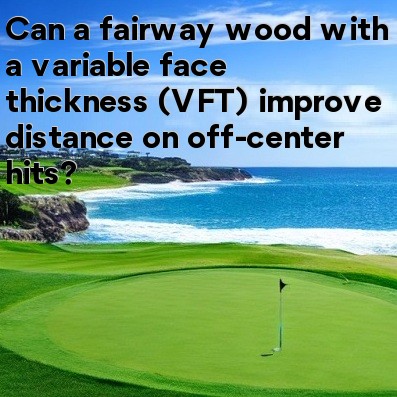
Can a fairway wood with a variable face thickness (VFT) improve distance on off-center hits?
Golf technology is constantly evolving and manufacturers are always looking for ways to improve the performance of golf clubs. One recent innovation that has gained popularity is the use of variable face thickness (VFT) in fairway woods. The question that arises is whether this technology can actually improve distance on off-center hits. Let's delve into the details to find out.
Variable face thickness refers to a design feature where the face of the club is thicker in some areas and thinner in others. The purpose behind this design is to optimize the energy transfer from the clubhead to the golf ball, even on mishits. When a golfer strikes the ball off-center, the impact is not as efficient, resulting in reduced distance and accuracy. By varying the thickness of the face, manufacturers aim to redistribute the energy to produce longer shots, even on mis-hits.
There are a few key benefits to using a fairway wood with VFT. Firstly, this technology helps to increase the size of the sweet spot. The sweet spot is the area on the face of the club that produces the best results in terms of distance and accuracy. With VFT, the sweet spot becomes larger, reducing the negative effects of mishits and providing greater forgiveness.
Secondly, VFT helps to maintain the ball speed even on off-center hits. When a golf ball is struck with an off-center impact, the energy transfer is not as efficient, resulting in a loss of ball speed. However, with a VFT fairway wood, the variable face thickness helps to preserve the ball speed by redistributing the energy generated by the golfer's swing.
Lastly, VFT technology can contribute to increased distance on mis-hits. The redistribution of energy allows for more of it to be transferred to the golf ball, even when the impact is not perfect. This means that even on shots struck towards the toe or heel of the clubface, a fairway wood with VFT can provide similar distance to shots struck at the center of the clubface.
It is important to note that the benefits of VFT technology may vary depending on the golfer's swing characteristics and skill level. While it can certainly help improve distance on off-center hits, it is not a guaranteed solution for every player. Factors such as swing speed, impact location, and swing path can all influence the performance of a fairway wood with VFT.
In conclusion, fairway woods with variable face thickness (VFT) can indeed improve distance on off-center hits. This innovative technology helps to increase the size of the sweet spot, maintain ball speed, and provide more forgiveness on mishits. However, it is essential for golfers to find the right club and technology combination that suits their individual swing characteristics to fully capitalize on the benefits of VFT.






